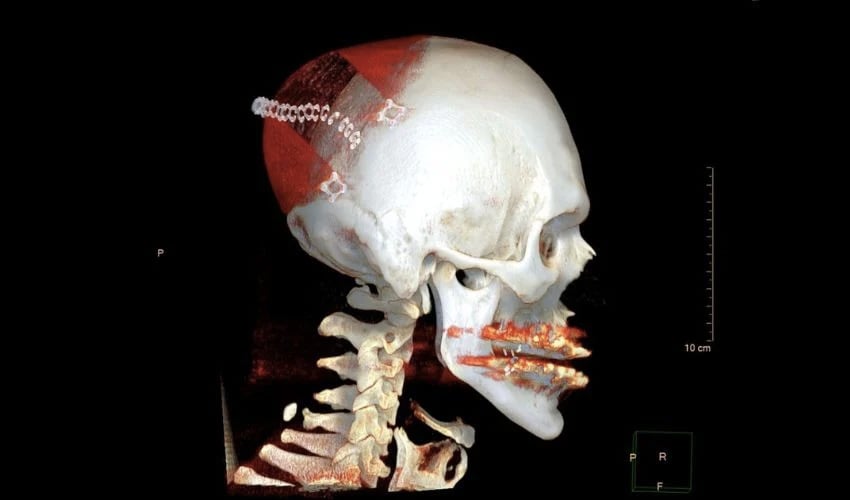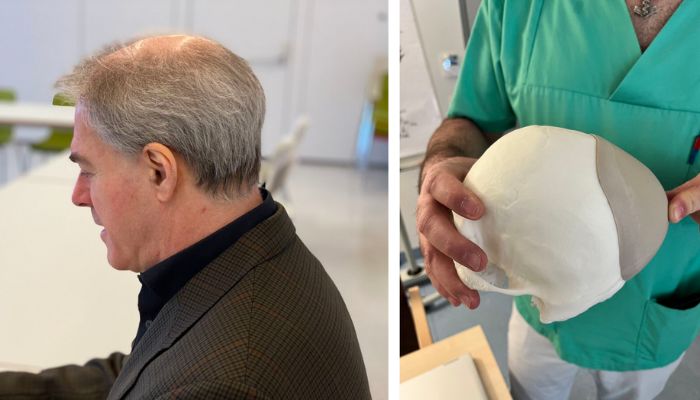A 3D Printed Cranial Prosthesis Was Implanted in a Patient

With the use of additive manufacturing in the medical field, it is becoming increasingly clear the technology can contribute to a better quality of life. For example, take the case of unprecedented operation that occurred in Austria at the University Hospital of Salzburg. Surgeons successfully implanted a 3D-printed cranial prosthesis in a patient – one of the first in Europe.

Mr. Trummer (center) had a 3D printed prosthesis implanted at the University Hospital of Salzburg
Professor Alexander Gaggl, head of the University Clinic for Oral and Maxillofacial Surgery (MKG) at the Salzburg University Hospital, explained: “We planned from the outset to replace the missing occiput with a prosthesis. However, we noticed that the scalp is very taut and barely stretchable.” For this reason, a plastic balloon was implanted under the patient’s scalp one year before the prosthesis was transplanted. A saline solution was added to the balloon during the treatment to make it the size of the desired 3D printed prosthesis.
Transplanting the 3D-printed prosthesis was a first for the Salzburg clinic. This one was also developed in the same place. CT images were used as templates to build it on the computer. This scanner makes it possible to obtain sliced imaging of the different parts of the body as well as to visualize tissues of different densities. The Kumovis R1 3D printer was used to fabricate the prosthesis. This machine met the institution’s requirements, as the system guarantees a sterile process. As for the material used, it was printed with PEEK. The clinic said the manufacturing process would have taken about 10 hours.
Six weeks after the operation and with the wounds largely healed, the patient Rainer Brummer was satisfied with the result: “I don’t feel like I have an implant in my head, I feel like I have a completely ‘normal’ head now. This is the realization of a lifelong dream for me.” In Europe, the University Hospital of Salzburg is one of the leading pioneers of 3D printing in hospitals. After a long procedure, in which all guidelines are followed, the clinic was allowed to print and transplant implants.

What do you think of the 3D printed prosthesis? Let us know in a comment below or on our LinkedIn, Facebook, and Twitter pages! Don’t forget to sign up for our free weekly Newsletter here, the latest 3D printing news straight to your inbox! You can also find all our videos on our YouTube channel.
*All Photo Credits: Salzburg University Hospital






